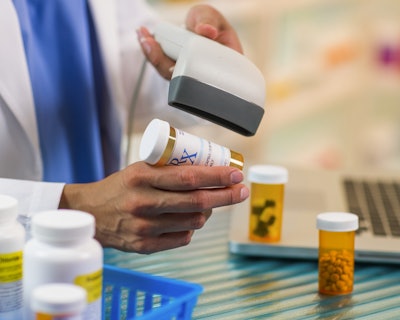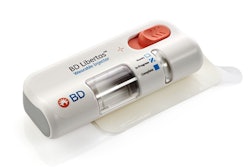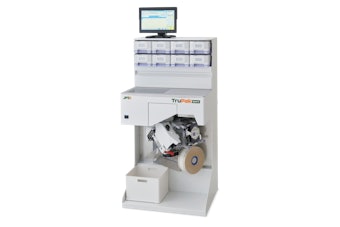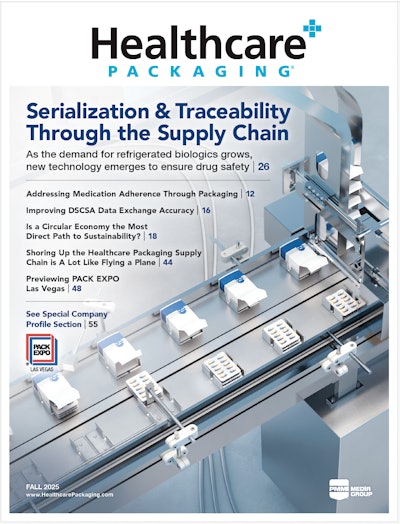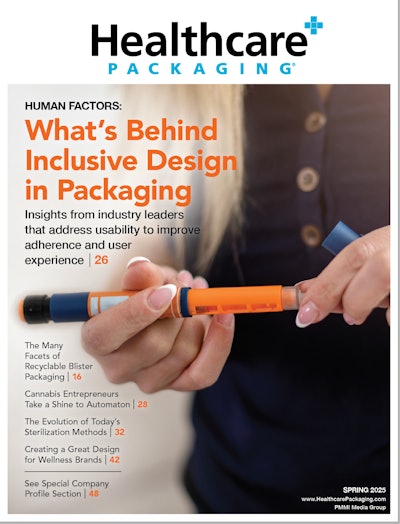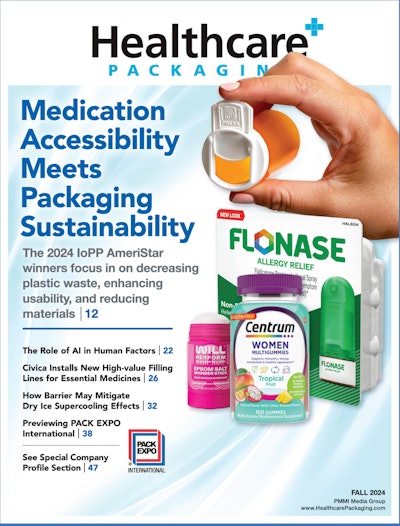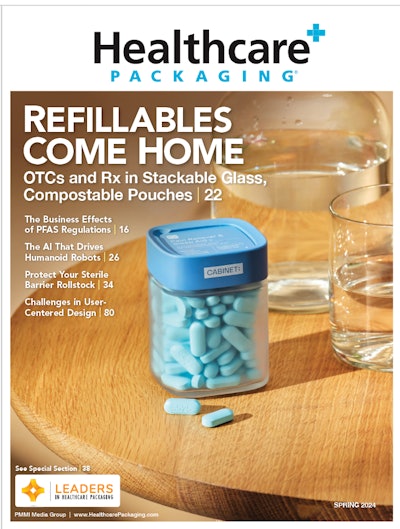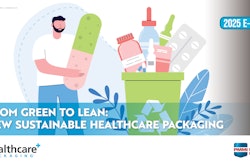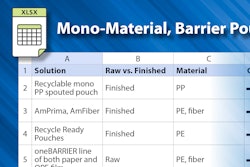Key takeaways:
- The demand for convenience-driven products and packaging is on the rise.
- In the case of medication management, AI technology can automate data extraction and cross-referencing.
- An emerging trend in technology and equipment is solutions to help manufacturers get their products to market faster.
TrendHunter recently released a list titled, “Top 100 Health Trends in August,” which reflects what the site says is a “shift toward lighter, smarter, and more restorative wellness solutions.” The trends vary from new proteins and vitamin formulations to wearable neurostimulation devices, and even personalized AI wellness platforms. Many of the emerging trends were ingredient-focused, such as prebiotic fiber breads, cereal-flavored toothpaste, and female-focused sport nutrition, but a handful of the 100 were manufacturing, packaging, and design-related developments. Read on a for a few highlights from the list, and check out the full list of health trends here.
Packaging: Portioned Out Convenience
The demand for convenience-driven products and packaging is on the rise, and TrendHunter reports that this is true for health products too, because they offer consumers flexible and hassle-free options that support overall wellness.
EllaOla, a wellness company focused on children’s care, introduces a line of powdered multivitamins designed to simplify daily nutrition for children, delivered in single-serve pouches. The convenience and flexibility of the single-serve pouches allows parents to add the supplements to any meal or beverage on the go.
Also designed for on-the-go use are single-use beauty wipes, growing in popularity as consumers seek convenient solutions for skincare and cosmetics. In response, Peep Club, a modern eye care brand, is now creating its award-winning Soothing Coconut Eye Balm in convenient on-the-go wipes. The single-use wipes are made from FSC trees and packaged in recyclable sachets.
While single-serve pouches and sachets offer convenience and ease of use, the Peep Club’s wipes also use recyclable materials, further attracting sustainably savvy consumers looking for a better-for-the-environment option.
Technology: Utilizing AI
Another emerging trend in TrendHunter’s list is the use of AI to boost patient safety and streamline tasks. In the case of medication management, AI technology can automate data extraction and cross-referencing, which reduces human error and enhances healthcare efficiency. One such example that made the top list is the recent collaboration between Asepha (an AI workflow automation company), Medisystem (a long-term care pharmacy), and Bruyère (a health organization in Ontario, Canada). The pharmaceutical solution leverages artificial intelligence to streamline medication reconciliation — a vital but labor-intensive task in pharmacy operations.
Currently, pharmacists dedicate substantial time to manually verifying and updating patient medication records. TrendHunter reports that this process is prone to human error and inefficiency, particularly for elderly patients with complex prescriptions. The proposed AI-driven platform automates data extraction and cross-referencing from multiple medical documents, identifying inconsistencies and offering clinical recommendations to expedite decision-making.
By minimizing manual intervention, the AI-enhanced pharmaceutical solution aims to accelerate workflow, enhance accuracy, and mitigate risks such as incorrect dosages or harmful drug interactions.
AI is also being utilized in the wearables space to improve patient safety. Fallyx, a company focused on developing fall detection and prevention technology, has developed an AI-driven wearable sensor that monitors movement patterns to improve fall detection and response times. A collaborative initiative between AgeCare (a provider of aging in place communities) and Acute Care Alberta (a health agency) is examining the potential benefits of implementing the Fallyx wearable sensor in continuing care facilities to enhance resident safety through advanced monitoring capabilities.
The project seeks to evaluate whether Fallyx's AI-driven wearable sensor can improve fall detection accuracy, accelerate emergency response times, and ultimately reduce preventable harm in supportive living environments. Here's how it works: the Fallyx sensor is worn at the waist and continuously tracks movement patterns and location data. Its AI algorithms analyze motion to distinguish between normal activities and potential falls, triggering immediate alerts to staff when incidents occur. Beyond reactive monitoring, the system may also identify subtle movement irregularities that signal elevated fall risk, enabling caregivers to implement preemptive measures such as balance training or environmental adjustments.
AI in these cases can improve patient safety at the pharmacy then also under a physician’s care. The intersection of AI and sensor technology in wearables is transforming the market, creating new opportunities for devices that provide real-time health insights and interventions.
Technology: Improved Time to Market
An emerging trend in technology and equipment is solutions to help manufacturers get their products to market faster.
Making the top trends list is Swisslog Healthcare, a pharmacy automation solutions company, and its i-Rolly, an innovative add-on feature designed to enhance the functionality of its AutoPack Automated Oral Solid Packager system. This new component automates the winding and organization of medication pouches, allowing the system to process up to 80 packs per minute while offering both manual and automatic operation modes.
Swisslog Healthcare's i-Rolly enables efficient sorting by patient or medication type, which improves inventory management in hospital pharmacies. By reducing manual handling, the i-Rolly minimizes errors in medication organization and streamlines workflow efficiency.
Another example of new technology improving workflow is what Veranex, a global MedTech company, says is the medical technology industry's first Innovation CRO (iCRO). This innovation represents a transformative approach to medical device and diagnostic development as it addresses critical challenges in today's constrained funding environment.
Veranex's integrated service model combines traditional contract research organization capabilities with comprehensive product development expertise across the entire lifecycle — from initial concept through regulatory approval and market access. The iCRO framework operates through four foundational elements, including accelerated development timelines promising three to six month reductions per phase, evidence generation strategies coordinated from project inception, specialized therapeutic area knowledge across 1,000+ completed programs, and proven regulatory pathways boasting a 96% approval rate.
Overall, health trends vary from consumer-focused like single-serve pouches to AI technology to predict falls, monitor and organize medications at the pharmacy, and even machinery to speed up time to market. Ultimately these solutions aim to improve the lives of the patient through new packaging breakthroughs and new technologies.
